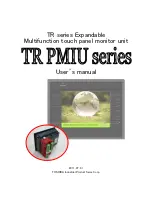
| 13
EN-Rev IM/GN-AM-EU/2.8 Copyright © July, 2021. CSI Solar Co., Ltd.
www.csisolar.com
recommended to improve both mechanical stability
and long-term module performance, we recommend
selecting a sufficiently resistant material. Canadian
Solar recommends bars with a minimum thickness of
50 mm (1.97 in). The support bar centerline should be
positioned within 100 mm (3.94 in) of the side frame
centerline (slight shifts may be necessary to access
module grounding holes).
The loads described in this manual correspond to test
loads. For installations complying with IEC 61215-
2:2016 and UL 61730, a safety factor of 1.5 should be
applied for calculating the equivalent maximum
authorized design loads. Project design loads depend
on construction, applicable standards, location and
local climate. Determination of the design loads is the
responsibility of the racking suppliers and/or
professional engineers. For detailed information,
please follow local structural code or contact your
professional structural engineer.
6.1 MOUNTING METHOD: BOLTING
The mechanical load test with these mounting methods
were performed according to IEC 61215.
Modules should be bolted to supporting structures
through the mounting holes in the rear frame flanges
only.
Each module must be securely fastened at a minimum
of 4 points on two opposite sides.
M8 X 1.25 - Grade 8.8 (5/16”-18 Grade B7) galvanized or
A2-70 stainless steel bolt and nut should be used.
The yield strength of bolt and nut should not be less
than 450MPa.
Tightening torques should be 16~20 Nm (11.8~14.75 ft-
lbs) for M8 (5/16”-18) coarse thread bolts, depending on
bolt class.
In areas with heavy wind loads, additional mounting
points should be used. The system designer and the
installer are responsible for correctly calculating the
loads and ensuring that the supporting structure meets
all the applicable requirements.
Mounting method: Bolting
Modules should be bolted at the following hole
locations depending on the configuration and loads:














































